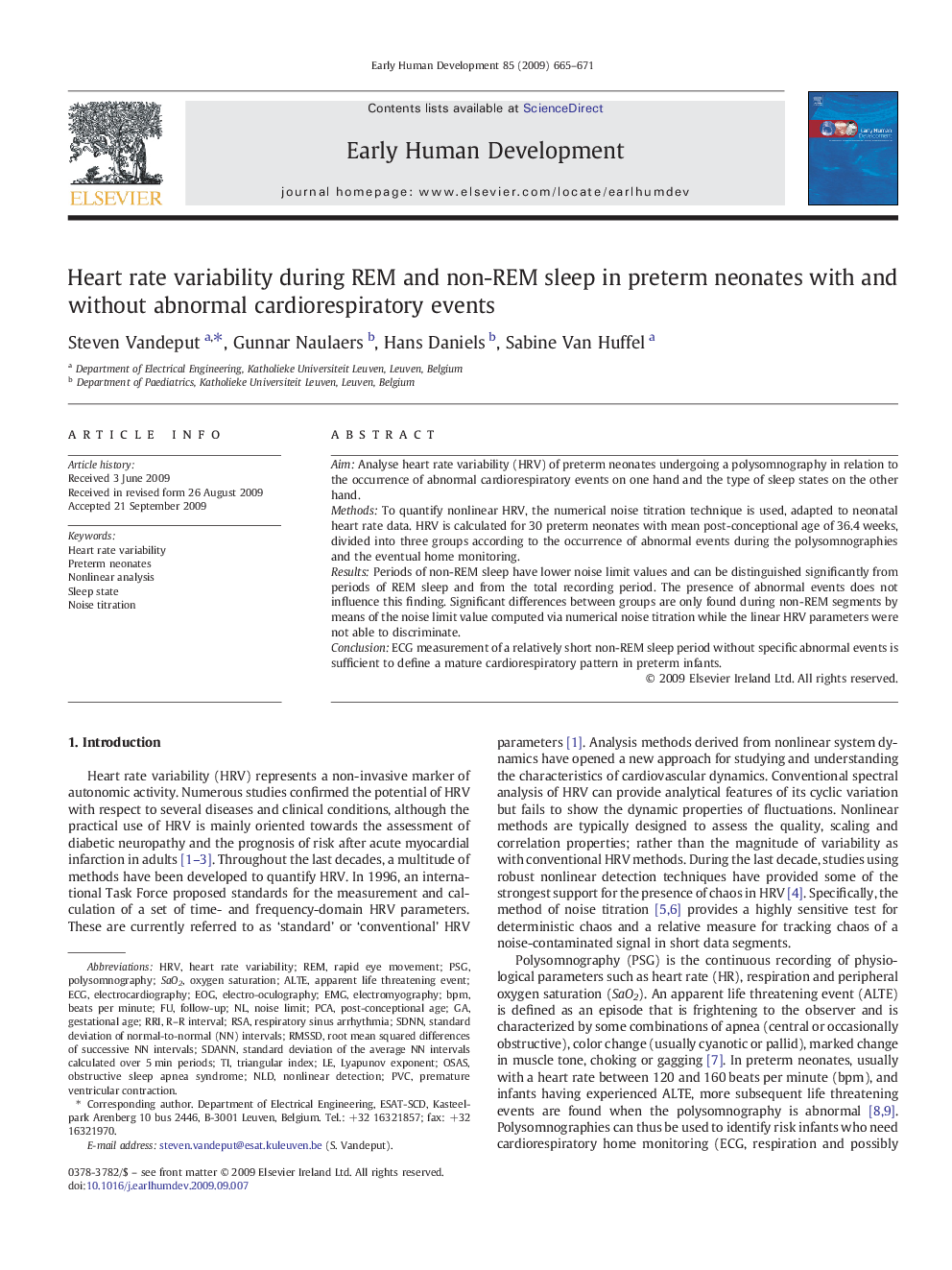| Article ID | Journal | Published Year | Pages | File Type |
|---|---|---|---|---|
| 3918006 | Early Human Development | 2009 | 7 Pages |
AimAnalyse heart rate variability (HRV) of preterm neonates undergoing a polysomnography in relation to the occurrence of abnormal cardiorespiratory events on one hand and the type of sleep states on the other hand.MethodsTo quantify nonlinear HRV, the numerical noise titration technique is used, adapted to neonatal heart rate data. HRV is calculated for 30 preterm neonates with mean post-conceptional age of 36.4 weeks, divided into three groups according to the occurrence of abnormal events during the polysomnographies and the eventual home monitoring.ResultsPeriods of non-REM sleep have lower noise limit values and can be distinguished significantly from periods of REM sleep and from the total recording period. The presence of abnormal events does not influence this finding. Significant differences between groups are only found during non-REM segments by means of the noise limit value computed via numerical noise titration while the linear HRV parameters were not able to discriminate.ConclusionECG measurement of a relatively short non-REM sleep period without specific abnormal events is sufficient to define a mature cardiorespiratory pattern in preterm infants.
